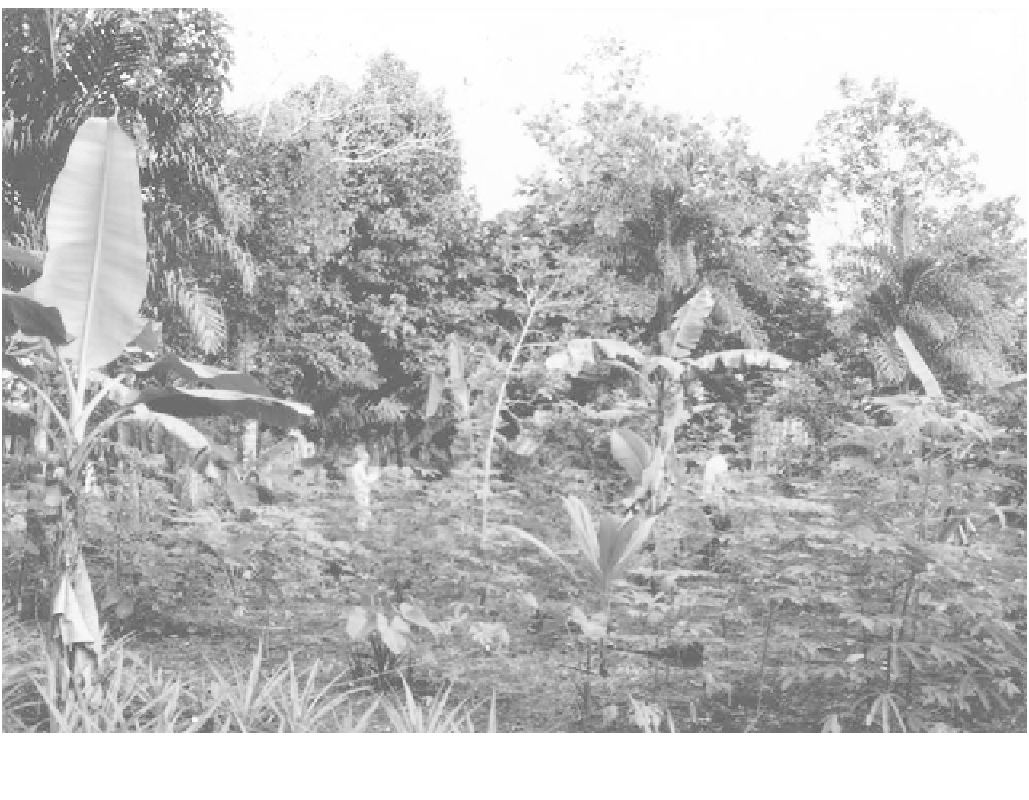Agriculture Reference
In-Depth Information
FIGURE 17.10
The home garden near Puerto Viejo, Costa Rica, undergoing a transition to market crops.
A new road opened
up market opportunities and prompted the changes in the species mix of the garden.
of the garden were observed to take place from one year
to the next (Gliessman, 1990a), as can be seen from the
data in Table 17.5. The total number of species in the
garden increased by 12, but more impressive is the major
increase in total number of individual plants. A large part
of this increase came primarily from the greater predom-
inance of ornamental species the second year, along with
more medicinal and spice species. Some of the food spe-
cies that had been very common the year before, such as
squash, were not present in l986 due to a drought that had
eliminated seedlings planted earlier.
Some of the changes in the garden can be traced to
changes in the household's economic situation. In 1986,
the woman of the household had less time to care for the
garden since she and her daughters had begun a small-
scale baking business making bread for sale in the local
community. If the baking business fails, food crops will
probably once again receive greater emphasis.
Even though socio-economic factors account for part
of the change in the garden, some of it occurs for ecolog-
ical reasons. Change in home gardens is ongoing and
sometimes quite rapid because of the shifting dynamics
of the disturbance-recovery process.
Links With the Social System
As indicated by the studies described above, social and
economic factors can have significant impacts on home
garden systems and the way they are managed. A long-
term study of traditional agriculture in Tlaxcala, Mexico
(González, 1985) found that changes took place in home
garden diversity, structure, and management in response
to industrialization and population increase. In general,
farmers reduced the number of species in their home gar-
dens, used more orderly and easily managed cropping
patterns, and planted species that could more easily enter
the cash economy. However, because Tlaxcala has gone
through several ”boom and bust” cycles over a longer time
period, where off-farm employment has been alternately
available and then limited, farmers have a certain mistrust
of job security off the farm. As a result, relatively diverse
agroecosystems have been maintained even in times of
off-farm employment as insurance against the probable
loss of the outside income.
Regional population growth has had a mixed impact
on home garden structure. Since Tlaxcala is close to the
large and expanding urban-industrial centers of Puebla and

Search WWH ::

Custom Search